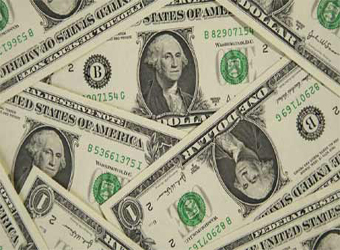The U.S. dollar dived Tuesday to a 10-month low against a basket of major currencies, hobbled by uncertainty over the pace of the U.S. Federal Reserve’s policy tightening and worries that President Donald Trump will fail to deliver healthcare reforms.
The Australian dollar jumped 1.3 percent to two-year highs after minutes from the central bank’s last policy meeting showed it turning more upbeat on the economic outlook.
The dollar’s index against a basket of six major currencies sank to a 10-month low of 94.706. From its 14-year peak of 103.82 touched on Jan. 3, it has lost 8.8 percent.
Weighing on the greenback, two more Republican Senators, Jerry Moran and Mike Lee, announced their opposition on late Monday to a revised Republican healthcare bill, delivering a serious blow to the legislation.
“If the bills won’t pass, there will be no money for tax cuts. The implementation of his fiscal policy will be difficult,” said Bart Wakabayashi, Tokyo Branch Manager of State Street.
Friday’s weak reading on U.S. inflation and retail sales also fanned speculation that the Fed may not have justification for another rate hike by the end of this year, despite policymakers’ projection for such a move.
Money market instruments are now pricing in less than 50 percent chance of a rate increase for the rest of the year.
In contrast, central bank policymakers in the euro zone, the UK and Canada have recently signaled they could adjust their policies, with the Bank of Canada raising rates last week for the first time since 2010.
“A lot of countries are catching up with the U.S. in terms of tightening in monetary policy. So it is natural that the dollar is losing its advantage,” said Yukio Ishizuki, senior currency strategist at Daiwa Securities.
The dollar’s losses accelerated after the euro rose above a major big number of $1.15.
The common currency rose 0.4 percent to $1.1528, hitting its highest levels since May last year.
The European Central Bank is expected to keep its policy on hold at its rates review on Thursday while many investors expect it to signal a reduction of its stimulus in the following policy meeting in September.
The dollar fell 0.4 percent to 112.30 yen, having lost steam after hitting a near four month high of 114.495 a week ago.
The Australian dollar is on track to make its biggest daily gain in four months after the minutes from the Reserve Bank of Australia’s policy meeting.
They showed policymakers revised down the new estimate of “neutral” interest rates, or rates that are not tight or too loose to the economy, to 3.5 percent, from around 5.0 percent.
“Arguably, the discussion around the neutral rate can be interpreted as laying the foundation for a tightening cycle. However with uncertainty around wages and inflation; the consumer; and, of course, the labor market and housing it would be inappropriate to over interpret this signal,” wrote Bill Evans, chief economist at Westpac in Sydney.
The Aussie was also helped by surges in commodity prices such as iron ore and copper following Monday’s data showing robust economic growth in China.
China’s economy expanded at a faster-than-expected 6.9 percent clip in the second quarter, setting the country on course to comfortably meet its 2017 growth target.
The Australian currency last stood at $0.7912, up 1.5 percent on day.
The New Zealand dollar slipped as much as 0.8 percent to $0.7261 after data showed consumer price inflation was flat in the second quarter, below the 0.2 percent expected by analysts in a Reuters poll, and sharply lower from the 1.0 percent posted in the first quarter.
The latest data is likely to reinforce the central bank’s view that it is in no rush to hike interest rates.
The kiwi last stood at $0.7350, up 0.4 percent, helped by the U.S. dollar’s broad decline.
The Canadian dollar scaled a 14-month high of C$1.2627 on Monday before easing a tad on weak Canadian home sales data. It last stood at C$1.2640 per U.S. dollar.
Source: Reuters



